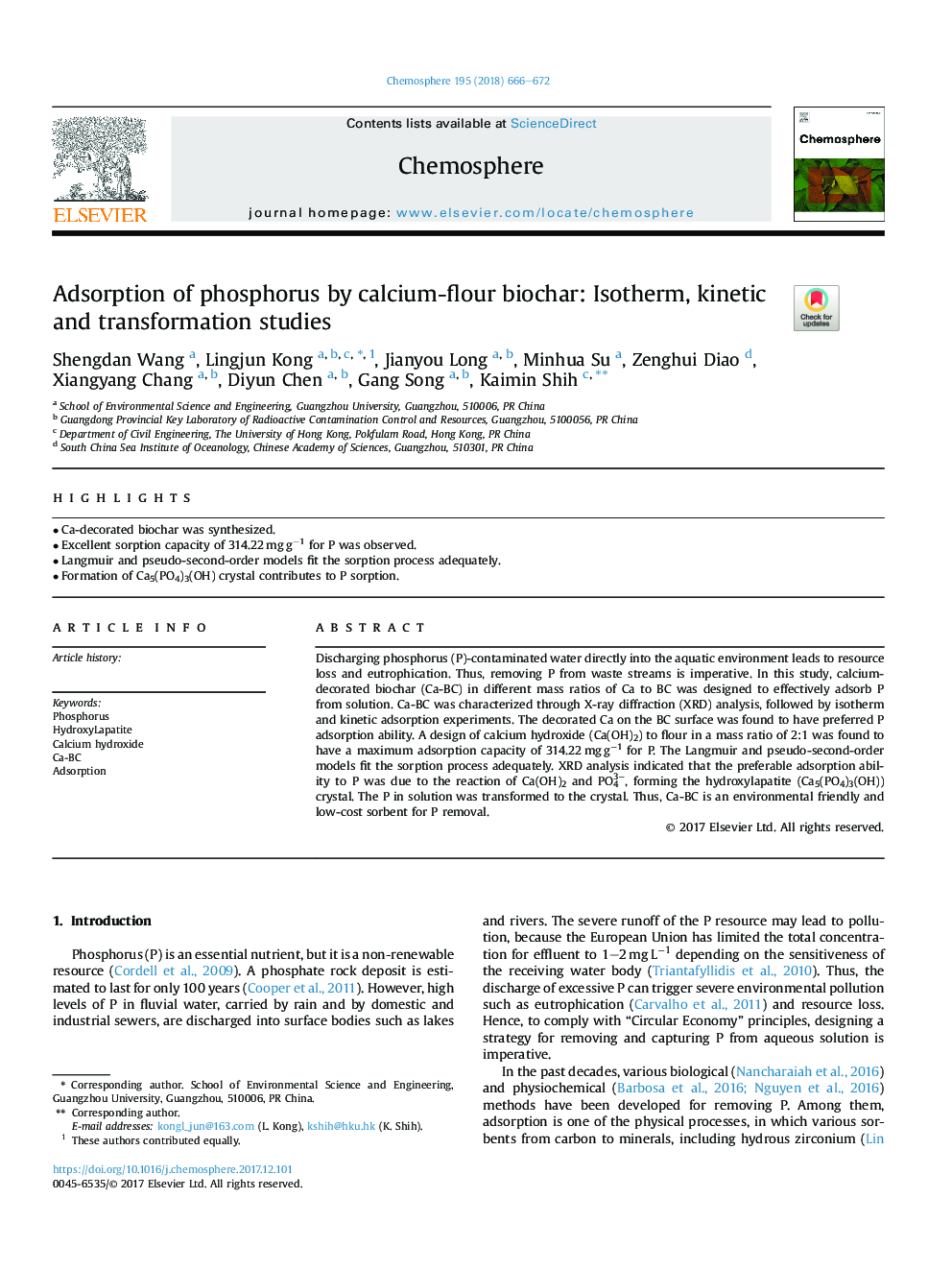| Article ID | Journal | Published Year | Pages | File Type |
|---|---|---|---|---|
| 8852343 | Chemosphere | 2018 | 7 Pages |
Abstract
Discharging phosphorus (P)-contaminated water directly into the aquatic environment leads to resource loss and eutrophication. Thus, removing P from waste streams is imperative. In this study, calcium-decorated biochar (Ca-BC) in different mass ratios of Ca to BC was designed to effectively adsorb P from solution. Ca-BC was characterized through X-ray diffraction (XRD) analysis, followed by isotherm and kinetic adsorption experiments. The decorated Ca on the BC surface was found to have preferred P adsorption ability. A design of calcium hydroxide (Ca(OH)2) to flour in a mass ratio of 2:1 was found to have a maximum adsorption capacity of 314.22â¯mgâ¯gâ1 for P. The Langmuir and pseudo-second-order models fit the sorption process adequately. XRD analysis indicated that the preferable adsorption ability to P was due to the reaction of Ca(OH)2 and PO43â, forming the hydroxylapatite (Ca5(PO4)3(OH)) crystal. The P in solution was transformed to the crystal. Thus, Ca-BC is an environmental friendly and low-cost sorbent for P removal.
Related Topics
Life Sciences
Environmental Science
Environmental Chemistry
Authors
Shengdan Wang, Lingjun Kong, Jianyou Long, Minhua Su, Zenghui Diao, Xiangyang Chang, Diyun Chen, Gang Song, Kaimin Shih,
